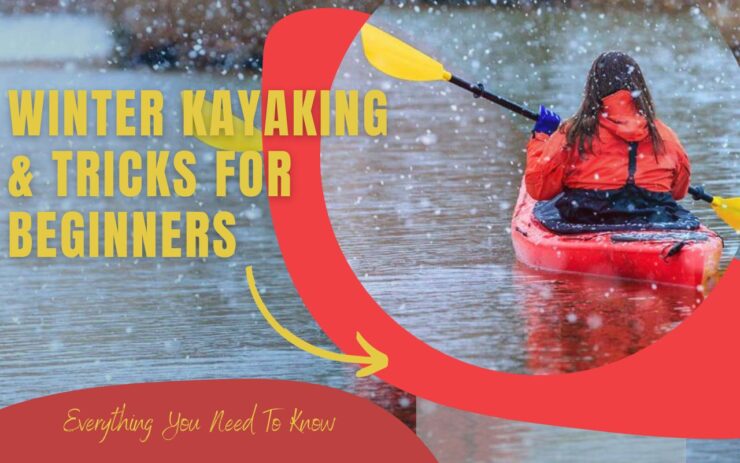Everyone needs a fun activity in their life to let off some steam, relax, and recharge from the rough reality of responsibilities. Not having a hobby means existing and waking up every day just to work. Where is the fun in that? Engaging in something pleasurable and enjoyable is what life should be about and we have just the thing for you. It does however come with some warnings and a general heads-up since you are a beginner. Right here and now, we are talking about kayaking, particularly winter kayaking.
Table of Contents
ToggleAbout the Sport
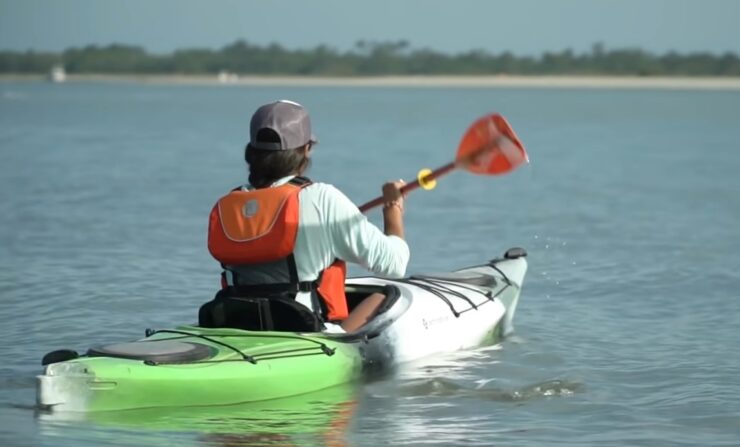
Kayaking is a water sport in which a person sits in a small, narrow boat and uses a paddle to move through the water. It is a popular recreational activity and can be a means of transportation. Kayaks are typically designed for one person, but there are also tandem kayaks that can accommodate two or more people. They can be robust and rigid, typically made of polyethylene plastic, or the ones that are foldable and inflatable that use lightweight materials that focus on easier handling.
To begin kayaking, you will need your own kayak, a paddle, and a personal flotation device (PFD). It is important to wear a PFD at all times while kayaking, as it will keep you afloat in the event of a capsizing accident. It is smart to choose a kayak that is appropriate for your skill level and the type of water you will be paddling in, as well as the activity you want to do from a kayak the most. For example, as a beginner, you may want to start with a stable kayak that is easy to maneuver.
Necessary Skills
Before you get on the water for the first time and try to do it entirely on your own, it is a good idea to learn some basic kayaking skills, such as how to hold and use a paddle, how to sit in a kayak, and how to control the boat. How you enter it and how you move inside of it also matters. You can learn these skills from a friend who is experienced in kayaking, you can watch a video online, or you can book a class and follow the instructor.
Once you are on the water, the most important thing is to stay calm and focused. Kayaking can be a challenging and physically demanding sport, especially the first few times around, so it is important to pace yourself and take breaks when needed. Always be aware of your surroundings and pay attention to any potential hazards, such as rocks or other boats.
Everything that has been said so far is several times more difficult in the winter simply due to the freezing air and water temperatures and the overall discomfort and worry that comes with shorter and gloomier days. This is not to say that kayaking cannot be done in the winter. On the contrary, the picturesque, snow-covered landscapes make for a completely different experience from what you are already familiar with.
Kayaking in Winter
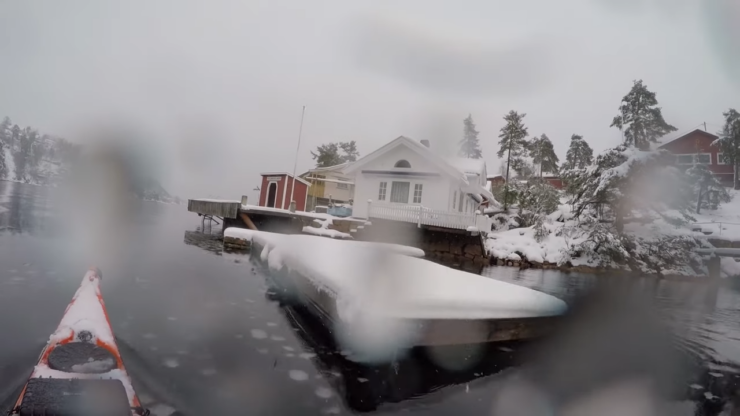
Winter kayaking can be a challenging but rewarding experience. It is important for beginners to understand the potential risks and take appropriate precautions before heading out on cold, cold water. The best to help would be to give you some tips and tricks to help you have a safe and enjoyable time kayaking in the winter, so get ready. Here they come.
1. Dress for the water temperature, not the air temperature
Even on a relatively warm day, the water temperature can be much colder than the air. It is important to wear a wet suit or dry suit to insulate your body and keep you warm. Better safe than sorry.
2. Wear gloves and a hat
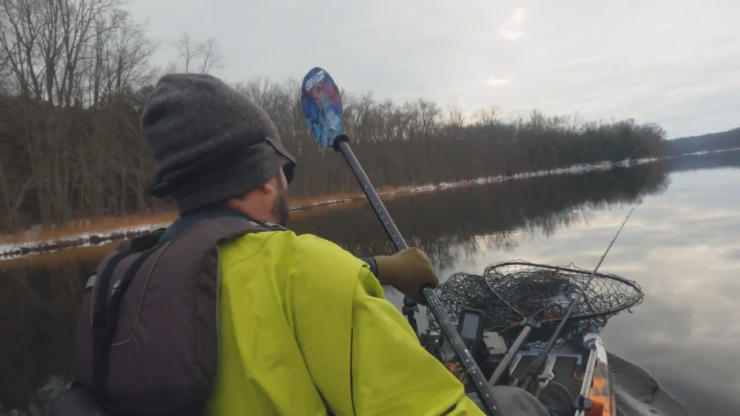
Your hands and head are particularly vulnerable to the cold, so it is important to protect them. Waterproof gloves and a hat will help to keep you warm and comfortable and allow you to enjoy the day more, and for longer.
3. Use a spray skirt to keep water out of your kayak
A spray skirt is a piece of waterproof fabric that attaches to the cockpit of your kayak and helps to prevent water from splashing in and getting you wet. This is especially important in the winter when the water is cold and your body can quickly lose heat. It is not fun to get soaked in chilling water!
4. Use a bilge pump to remove any water that does splash into your kayak
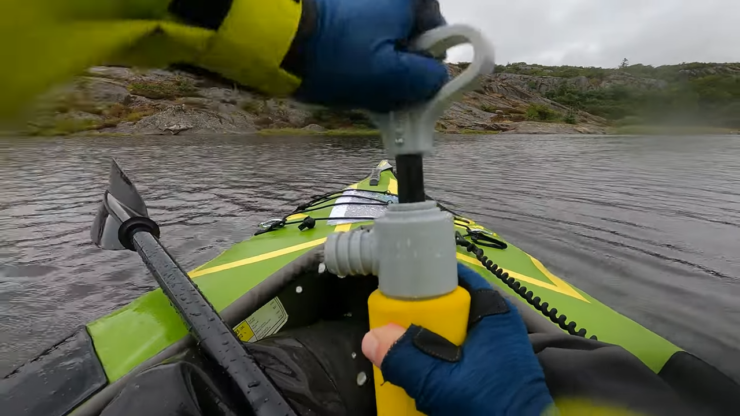
A bilge pump is a small hand-powered pump that is used to remove water from a vessel. It is a good idea to keep one on hand in case you need to use it. Colder water needs to be taken care of more quickly than regular, summertime temperature water because it does more damage.
5. Stay visible to other boats and watercraft
In the winter, visibility can be reduced by fog, snow, and other weather conditions. It is important to wear brightly colored clothing and use lights or reflective tape to make yourself more visible to other boats and watercraft.
6. Use a float plan
A float plan is a document that details your intended route, the number of people in your group, and other important information. It is a good idea to leave a float plan with a friend or family member in case something goes wrong and you need to be located.
7. Be aware of the local weather conditions
Before heading out on the water, check the weather forecast and be prepared for any potential hazards. Be prepared to turn back if the conditions become too dangerous.
8. Be prepared for emergencies
It is important to carry a first aid kit, a whistle, and other safety equipment in case of an emergency. It is also a good idea to carry a signaling device, such as a flare or mirror, in case you need to attract the attention of other boats or watercraft.
9. Practice self-rescue techniques
In the event that you capsize or become separated from your kayak, it is important to know how to perform a self-rescue. This may involve getting back into your kayak, staying with your kayak, or swimming to shore. Practice these techniques before heading out on the water.
Adelaide Gentry, a seasoned kayaking enthusiast and expert, is the driving force behind KayakPaddling.net. With over a decade of experience navigating the world’s most challenging waterways, Adelaide combines her passion for adventure with a deep knowledge of kayaking to provide insightful and practical guidance for paddlers of all levels.
Related Posts:
- Heavy Duty Fishing: 11 Best Rods And Reels For Big Fish 2024
- 16 Best Kayak For Beginners 2024 - Kayaking Adventure Gear
- 10 Best Saltwater Fishing Boats - Ultimate Angling Adventure
- 10 Best Kayaks For Camping 2024 - Lightweight and…
- 20 Best Inshore Spinning Reels 2024 - Capturing All…
- 16 Best Kayak Fishing Paddles 2024 - Affordable Fishing Gear

